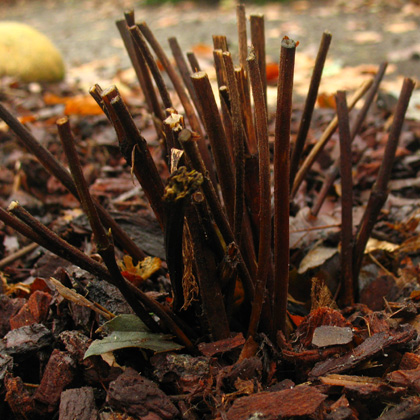
Pruning is an important topic for the successful cultivation of clematis!
Regardless of the planting date or the later flowering date, you should carry out a so-called “pruning”. The newly planted clematis should be cut back approx. 20-30 cm above the ground in November or December of the year of planting. In the case of spring-flowering clematis, for example, it is best to forgo the few flowers in the first year and think about a well-branched, bushy and vigorous plant in the long term.
The following pruning rules are then followed in subsequent years.
Clematis experts, gardeners, hobby gardeners and authors of books all agree that all clematis are divided into three different pruning groups. These cutback groups are labeled 1, 2 or 3 or A, B or C.
There is widespread disagreement about the date of pruning, especially with pruning groups 2 and 3, the question arises as to when to prune. Pruning in late fall or spring? Both are possible! Everyone must decide for themselves when to prune. There are advantages and disadvantages to both options, but I recommend pruning in November/December.
Clematis pruning – Group 1
Do not prune is often the recommendation – but this is not quite the right way to put it.
It would be more correct to say: pruning yes, in May-June and not in November-December.
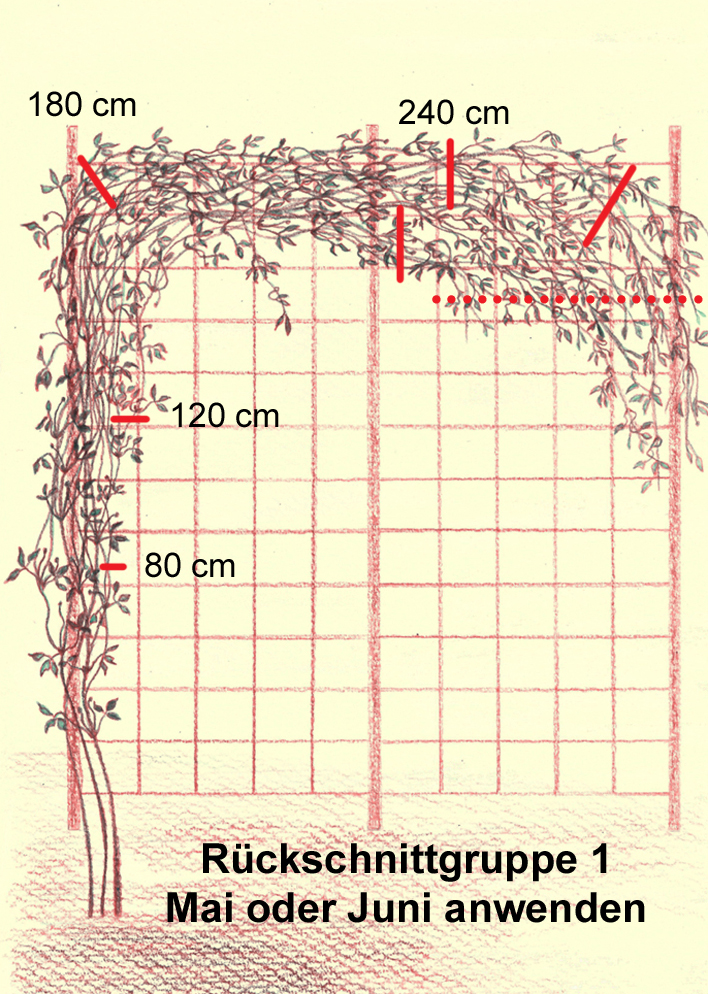
This rule applies to numerous spring-flowering plants as well as wild species and their varieties. This primarily includes the entire C. alpina (atragene) and C. montana. Both groups of species lay their spring buds in the summer and fall of the previous year. The flowering period itself then begins the following spring after the winter dormancy. Young leaves and flowers then appear at the same time. This development is called “flowering on the previous year’s wood”, a common phenomenon in woody plants such as forsythia or fruit trees.
All spring-flowering plants tend to senesce, so it is all the more important to prune them at the right time! Cut back to the desired size. The plants then have enough time to grow and produce buds for the following year. Partial pruning is also helpful, especially in the case of Montanas, which can be limited to a few shoots of different lengths.
Clematis pruning – Group 2
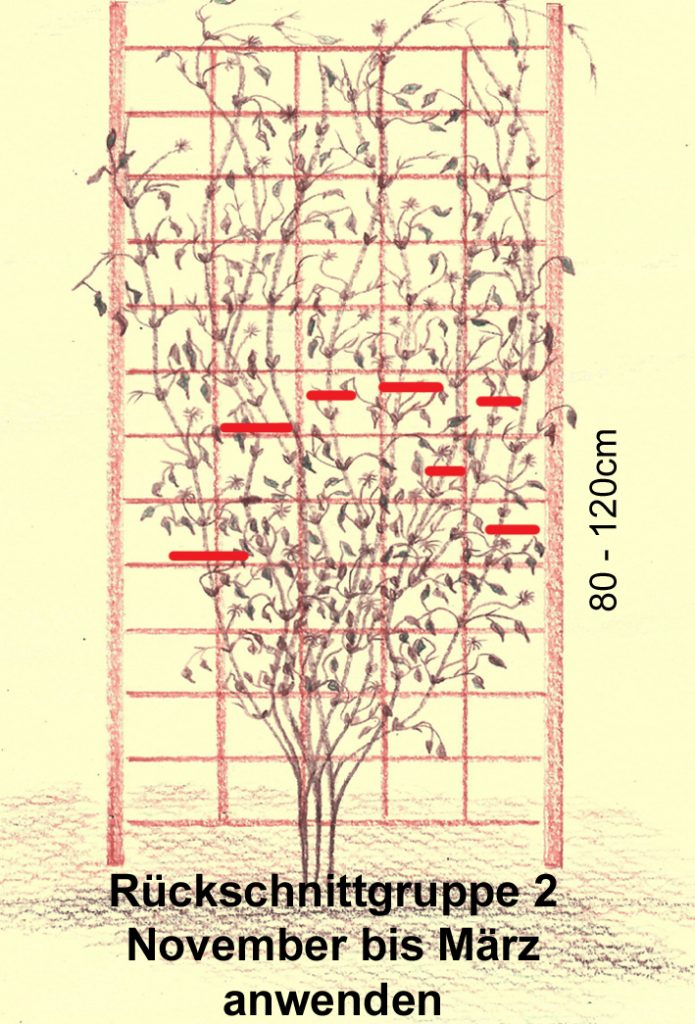
Cut back lightly every year in November/December (shorten all shoots by half). This is a pruning height of approx. 60 cm to 120 cm above the ground. Cut back younger clematis at 60-80cm, older clematis between 80-120cm. Use on clematis hybrids that flower twice a year. In my descriptions, these clematis are listed with flowering dates of 5/6 (May-June) and 8/9 (Aug.-Sept.). Heavy pruning to 30-40 cm above the ground is recommended every 4-5 years to rejuvenate the clematis and keep it vital.
All clematis hybrids in this pruning group flower in spring in the lower section on the short shoots that emerge from the “previous year’s wood”. After the first flowering period in spring, new shoots (long shoots) are formed, which then flower again in summer/late summer.
Many double-flowering clematis hybrids only produce double flowers on these short shoots in spring!
The second flowering period in summer/late summer is often unfilled or semi-double in such clematis varieties. There are some clematis exceptions that also flower double during the second flowering period, e.g. Multi-Blue.
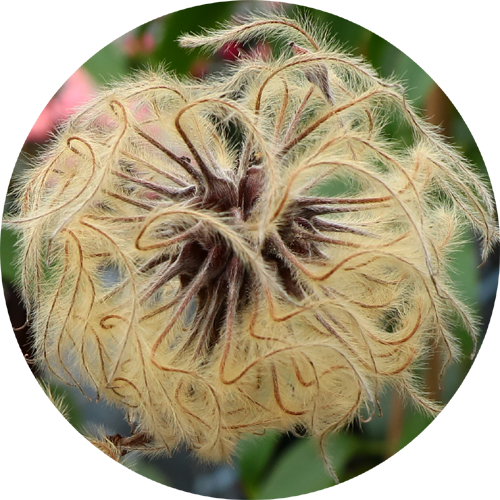
Typical of these clematis varieties is the abundant fruit set after the first flowering period. These fruits should be cut off and removed together with the pair of leaves underneath, so that the shoots will grow back quickly and the new shoots will then flower profusely again in about 6 weeks!
Clematis pruning – Group 3
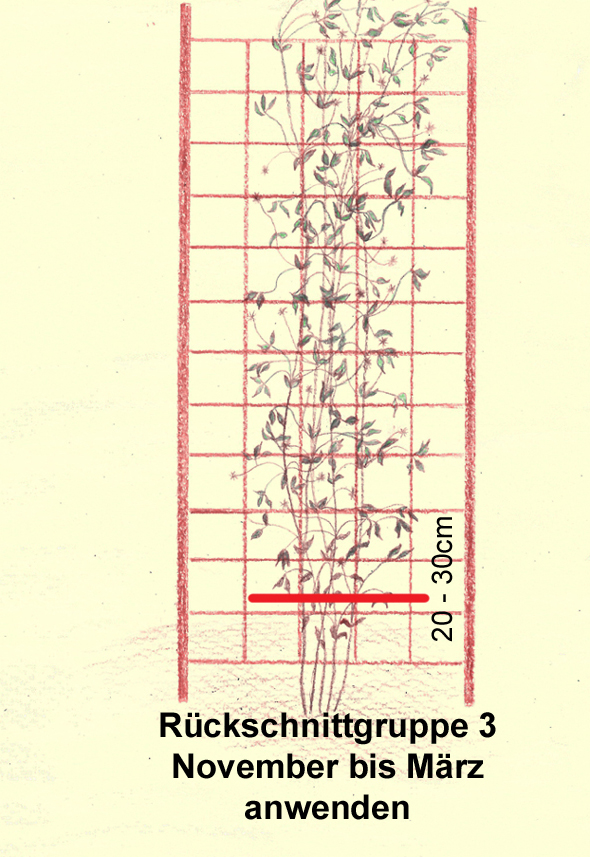
Cut back all shoots vigorously every year in November/December (to 20 to 50 cm above the ground). Used for numerous Clematis hybrids and Clematis wild species that flower exclusively in summer. All these species and varieties produce long shoots that end in a mass of flowers. These include, for example, Clematis viticella, Clematis texensis or Clematis hybrids such as Jackmanii or Rouge Cardinal. Without pruning, such clematis would become more and more bare from below. Certainly not harmful in some planting positions, e.g. with shrubs or climbing roses, i.e. the pruning height can be individually adapted to the local conditions.
